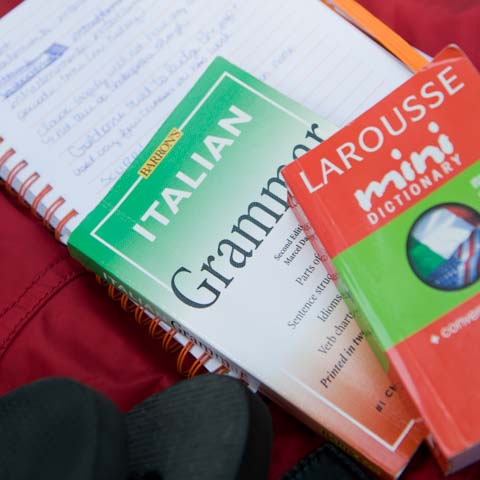The Comprehensive Guide to IB Norwegian A Language and Literature
Introduction
Welcome to the comprehensive guide to IB Norwegian A Language and Literature! This guide aims to provide you with valuable insights and knowledge about the International Baccalaureate (IB) Norwegian A Language and Literature course. Whether you are a student, a teacher, or simply interested in Norwegian language and literature, this guide will offer you a comprehensive understanding of the subject. Let's delve into the world of Norwegian language and literature together!
The Importance of IB Norwegian A Language and Literature
IB Norwegian A Language and Literature is a subject of great importance as it allows students to explore the richness and depth of Norwegian language, culture, and literary heritage. By studying Norwegian language and literature, students develop language proficiency, critical thinking skills, and a deep appreciation for the nuances of the Norwegian language. This course nurtures students' linguistic abilities while providing insights into Norwegian culture, history, and societal issues.
The Curriculum: Exploring the World of Norwegian Language and Literature
Theme 1: Language, Identity, and Culture
One of the key themes explored in the IB Norwegian A Language and Literature curriculum is the interplay between language, identity, and culture. Students engage with literary works that examine how language shapes individual and collective identities, as well as the influence of cultural context on language use. Through texts such as Henrik Ibsen's "Et dukkehjem" (A Doll's House) and Tarjei Vesaas' "Fuglane" (The Birds), students analyze the complex relationship between language, identity, and cultural expression.
Theme 2: Literature and Society
The second theme of the curriculum focuses on the examination of literature in its social context. Students explore how literary works reflect and critique societal norms, values, and challenges. Texts like Sigrid Undset's "Jenny" and Bjørnstjerne Bjørnson's "En glad gut" (A Happy Boy) provide students with insights into social issues, gender dynamics, and the role of literature in shaping public discourse.
Theme 3: Texts in Translation
The third theme allows students to study Norwegian literary works in translation. Students analyze the challenges and opportunities of translating literature across languages and cultures. Through texts such as Knut Hamsun's "Sult" (Hunger) and Hanne Ørstavik's "Kjærlighet" (Love), students explore the art of translation and the impact of language on the reception and interpretation of literary works.
Exam Preparation: Tips and Strategies
Preparing for the IB Norwegian A Language and Literature exam requires diligent preparation and effective strategies. Here are some tips to help you succeed:
- Read Widely: Engage with a diverse range of Norwegian literary works, including works from different genres and time periods, to develop a comprehensive understanding of Norwegian literature.
- Analyze Texts: Practice close reading and analysis of literary techniques, themes, and cultural context within the texts.
- Develop Writing Skills: Enhance your essay writing skills by structuring your arguments, providing textual evidence, and demonstrating critical thinking.
- Research the Context: Gain insights into the historical, social, and cultural context of the texts to better understand the motivations of the authors and the societal issues they address.
- Collaborate and Discuss: Engage in discussions with classmates, teachers, and online forums to exchange perspectives, interpretations, and insights about the texts.
- Utilize Past Papers: Familiarize yourself with past exam papers to understand the exam format and types of questions that may be asked.
Frequently Asked Questions (FAQs)
Q1: Do I need to be fluent in Norwegian to study IB Norwegian A Language and Literature?
Yes, a strong proficiency in the Norwegian language is essential to study and excel in IB Norwegian A Language and Literature. The course requires reading, analyzing, and writing about Norwegian literary texts in depth.
Q2: Can I choose my own texts for analysis in the IB Norwegian A Language and Literature course?
No, the texts for analysis are predetermined by the IB curriculum. However, within the prescribed texts, students have the flexibility to explore different interpretations and aspects of the works.
Q3: Are there any recommended resources for studying Norwegian literature?
Yes, various resources are available to support your study of Norwegian literature. Online platforms, scholarly articles, and reputable literary journals can provide valuable insights, analysis, and critical perspectives on Norwegian literary works.
Q4: How can studying IB Norwegian A Language and Literature benefit me in the future?
Studying IB Norwegian A Language and Literature enhances your language proficiency, critical thinking skills, and cultural awareness. It can open doors to various career paths, such as translation, interpretation, academia, journalism, and cultural exchange programs focused on Norway.
Q5: Are there any famous Norwegian authors or literary works?
Norway has a rich literary tradition with many renowned authors and literary works. Some famous Norwegian authors include Henrik Ibsen, Knut Hamsun, Sigrid Undset, and Bjørnstjerne Bjørnson. Notable literary works include "Et dukkehjem" (A Doll's House), "Sult" (Hunger), "Kristin Lavransdatter," and "En glad gut" (A Happy Boy).
Q6: Can I pursue Norwegian literature studies beyond the IB program?
Certainly! If you develop a passion for Norwegian literature through the IB Norwegian A Language and Literature course, you can continue your studies at the undergraduate or graduate level, either in Norway or at institutions abroad.
Conclusion
In conclusion, this comprehensive guide has provided you with a thorough understanding of IB Norwegian A Language and Literature. By exploring the curriculum's themes, exam preparation tips, and frequently asked questions, you are now well-equipped to embark on your journey of studying Norwegian language and literature. Embrace the beauty of Norwegian literary traditions and let them inspire and enrich your intellectual pursuits.

 By
By


